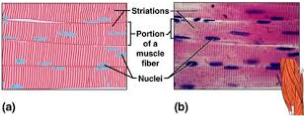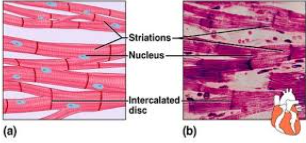Muscle Tissues and its types
1/4
There's no tags or description
Looks like no tags are added yet.
Name | Mastery | Learn | Test | Matching | Spaced |
|---|
No study sessions yet.
5 Terms
muscle tissues
BLANK cells, or fibers, can contract and consist of three major types.

skeletal muscle tissue
1. BLANK muscle is attached to bone and can be controlled by conscious effort (voluntary).
2. The cells (BLANK fibers) are long and cylindrical, striated, have many nuclei, and contract from nervous impulse.
smooth muscle tissue
1. BLANK muscle tissue lacks striations, is uni-nucleate, and consists of spindle-shaped cells.
2. This involuntary muscle is found in the walls of internal organs, and in the digestive tract, blood vessels, and urinary bladder.

cardiac muscle tissue
1. BLANK muscle tissue is found ONLY in the HEART and consists of branching fibers that are connected to each other with intercalated disks.
2. This involuntary muscle has a single nucleus in each cell but appears striated.
